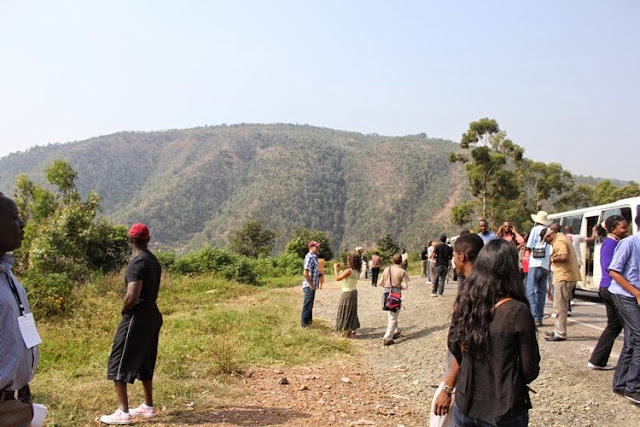It was 1999, exact date unknown. A group of
farmers from Kageyo village in eastern Rwanda were tiptoeing through Akagera
National Park on
Tanzania’s border, returning to the carcass of a cow they had laced with poison
the previous night.
Lions have been on top of the must see list for many tourists visiting Rwanda and their reintroduction is a milestone for the country’s tourism sector
As the contaminated corpse
came into sight, the farmers noticed that their bait had been taken four lions
lay dead in the dusty earth beside their final, fatal meal. Mission
accomplished. Or not. “Next to the dead lions were the footprints of
another lion, which had walked away,” recalled Kalisa Emmanuel, one of the
farmers. “It hadn’t eaten the poison.”
A pursuit ensued and the men soon located the
lion. “It attacked us and one of us went down,” Emmanuel said. “The lion tried
to kill him. It crushed his arm.” In the panic, Emmanuel scurried up a tree
while another farmer speared the animal. The lion died and three of the farmers
were injured; one seriously, with deep cuts to his abdomen. The unscathed men
took the wounded to hospital and they survived. Their heroic story was reported
on local radio that night. The last lion was seen in 2006.
Lions were poised to make a
comeback in Rwanda in June 2015, as part of a project that will also see rhinos
reintroduced to the park. Seven lions – five females and two males, imported
from Beyond Phinda Private Game Reserve and Tembe Elephant Reserve of South
Africa were released in Akagera National Park, the country’s only protected
savannah region.
The development puts Rwanda in position to
compete with other national parks in the region like Serengeti National Park in
neighbouring Tanzania which dwarves this humble reserve and is already home to
the Big Five (Lion, Elephant, Leopard, Buffalo and Rhino), Queen Elizabeth
National Park in Uganda and Masai Mara in Kenya. But Akagera has its own appeal. Though small, it has an extraordinary
diversity of landscapes – lakes, mountains, savannah and wetlands that harbour
a staggering array of wildlife. Joseph Birori,
the chairman of Rwanda Tour and Travel Association, said reintroduction of
lions (brought from South Africa) in Akagera National Park is an added value to
tour operators ‘menu’, noting that the country has been relying on other
national parks in neighbouring countries.
Lions have been on top of the must see list for many
tourists visiting Rwanda and their reintroduction is a milestone for the
country’s tourism sector. Birori said the development is a great stride for the
country, adding that it will boost tourism revenues. “We can now proudly
recommend Akagera National Park to tourists because anyone visiting a savanna
national park expects to see lions. The lions that have been donated to the
Akagera National Park were carefully selected and are very tourist friendly, disease
free and genetically diverse said Phinda Conservation Management.
The reintroduction of Lions in Rwanda is in position to compete with other national parks in the region
There are approximately 500 species of bird: African fish eagle to the flamboyant lilac
breasted roller. Driving into the hills zebra and bushbuck grazing in the long
grass are able to be seen, common eland the largest antelope in the world, and
a black mamba, the most dangerous snake on Earth. “They can jump into cars,”
said one of the field guide promptly winding up the window.
Akagera National Park is the only protected savannah region in Rwanda.
There is every reason to be confident in the government’s ability to
develop a sustainable tourism industry in Akagera: its advancement of gorilla
tourism in northern Rwanda’s Volcanoes National Park is regarded as one of the most
successful conservation projects in Africa. Like Volcanoes, Akagera is also
donating 5% of all tourism revenue to local communities. That money will fund
schools, hospitals and farming cooperatives, making conservation pay for
everyone.
The views expressed are those of the author and are not necessarily of the scientific studies







Comments
Post a Comment